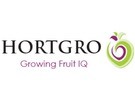The total 2024 apple export volumes are projected at 48.42 million eq. cartons (12.5kg eq. cartons) which is 11% up compared to the previous season. Pear export volumes are projected at 20.06 million cartons (12.5kg eq. cartons); +8% year-on-year. This is a recovery on the 2023 season which was negatively impacted by weather conditions.

Apple varieties mostly affected were Fuji (-2% yoy); Pink Lady volumes were negatively affected by poor color development, down 10%. YTD inspection volumes in EGVV and Ceres regions are up 2% and 38% compared to the previous seasons (just keep the hail damage of last year in mind for Ceres indicating a recovery on the 2022 season). Far East & Asia is still the biggest export apple market with 33% of market share. India specifically has seen substantial growth in volumes, with just under 3mil apple cartons exported YTD compared to last year's 1.9mil eq. cartons (+55% yoy). Africa at 23% and the UK at 15% followed by the Middle East a 12%. YTD volumes exported to Europe and Russia have seen a noteworthy increase compared to the previous season.
Overall, the pear market is still positive. Europe is still our biggest export market with 34% of all exports. This is also a 25% increase year-on-year. Far East Asia and the Middle East are at 20% and 17% market shares respectively. Packham's Triumph had a lighter crop and was also impacted by the wet spring conditions resulting in russet. Forelle and Abate Fetel volumes realized better volumes and were respectively up by 19% by 26%. Summer pear exports also performed better than last year with significant increases in Rosemarie, Cheeky, Celina, and Comice.
Apricots (2023/24 season): Total export volumes = 480 00 eq. cartons (4.75kg/eq. carton) were down by 19% from the previous season. This is the second-lowest export crop of apricots in the last 15 years. The biggest production area (Klein Karoo) had frost damage that had a huge impact on the overall export crop. The decreasing planting trend that has been experienced since 2000 has stabilized over the last 3 seasons with a slight increase in plantings of fresh apricots, mostly late varieties. The issue with apricots from an industry perspective remains that it has a very short season and supply window with the bulk of the product exported from Week 44 to week 49. We have seen some investments in later varietals – however, compared to the total export crop these volumes remain low. The majority of the volumes were exported to the Middle East (51%), Europe (26%), and the UK (22%). 19% were exported via airfreight where it can generally be anticipated that this product would have had fewer quality issues resulting from delays in logistics.
To view the full report, click here.
 For more information:
For more information:
Hortgro
Tel: +27 (0)21 870 2900
Email: [email protected]
www.hortgro.co.za










